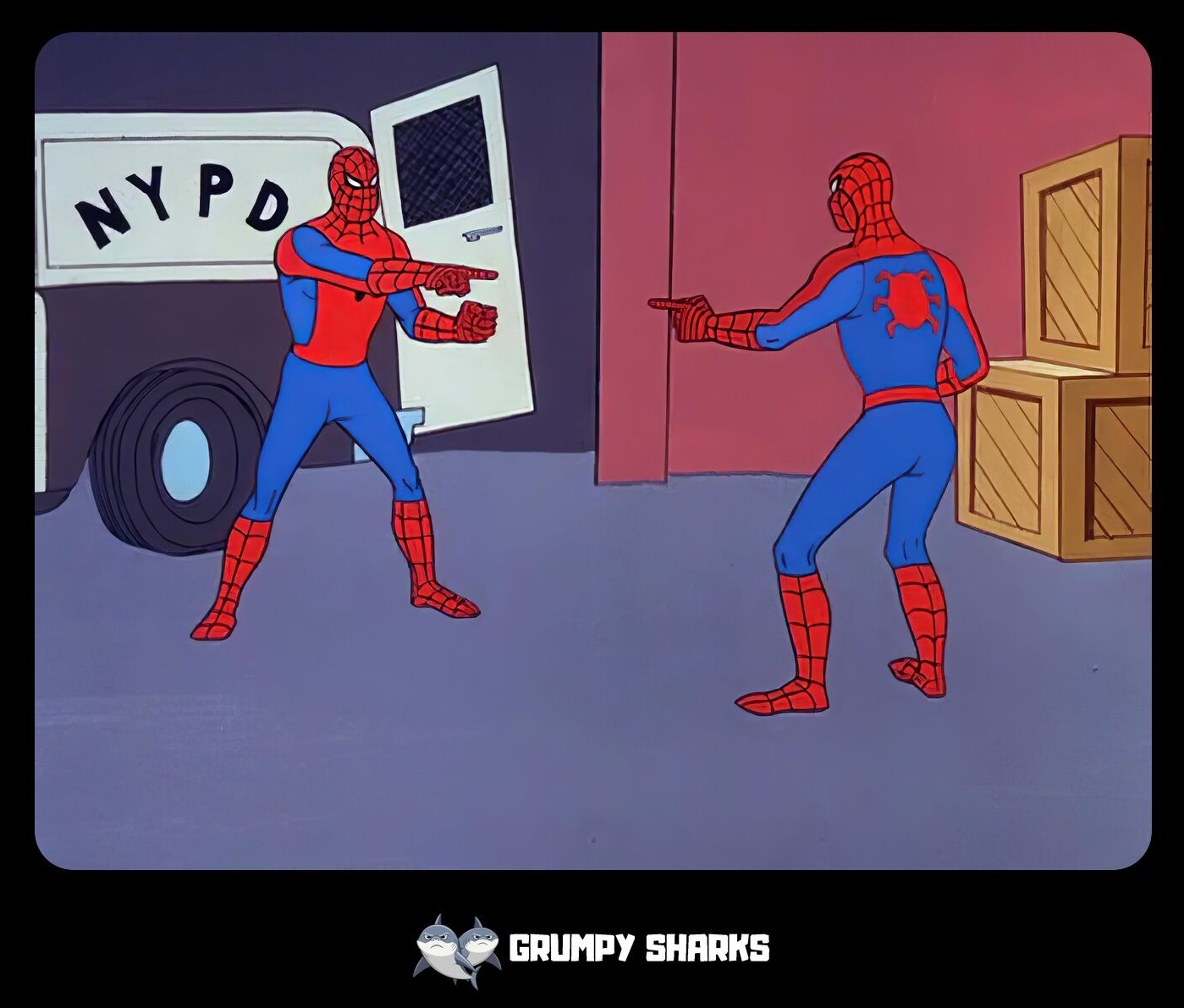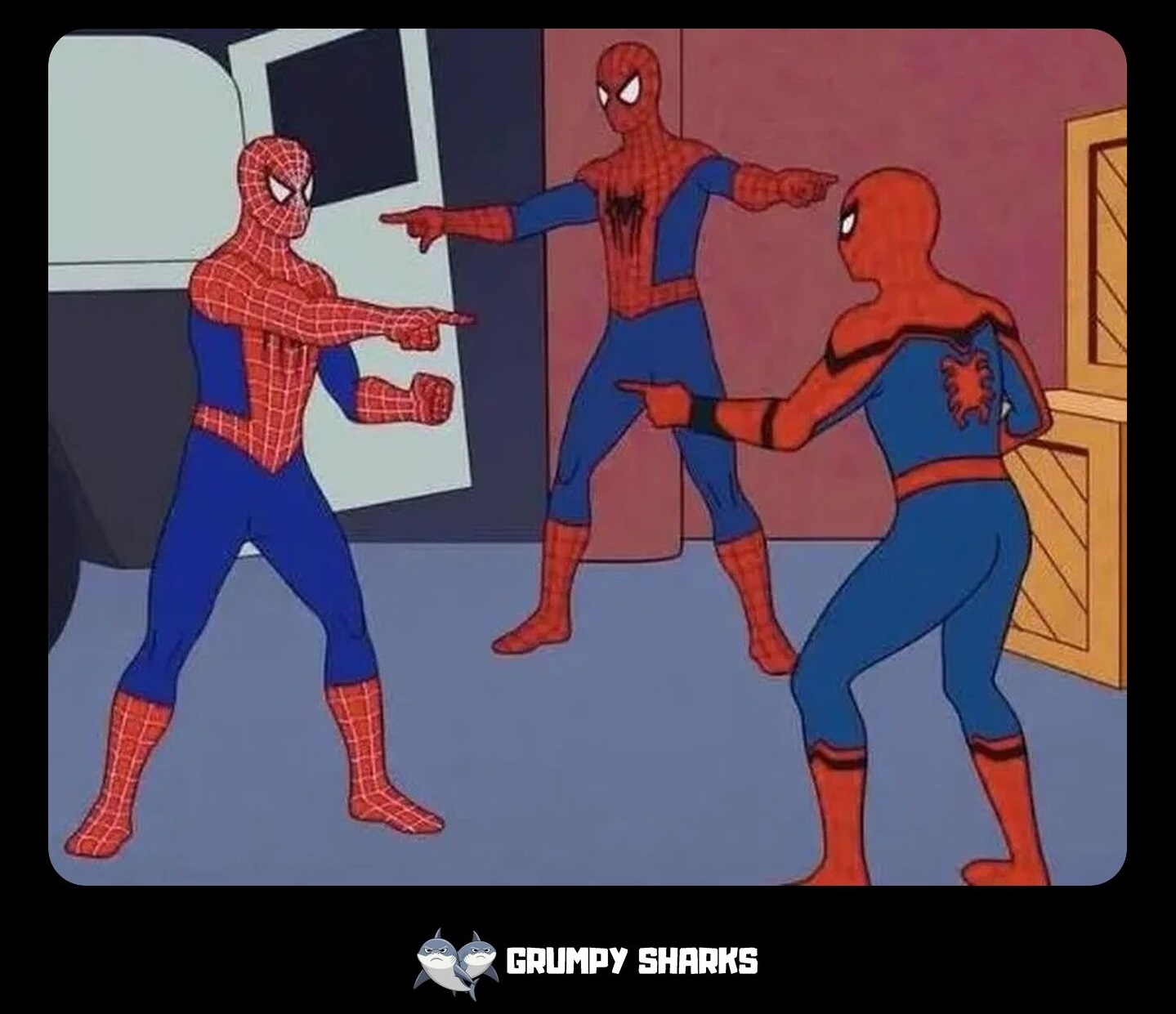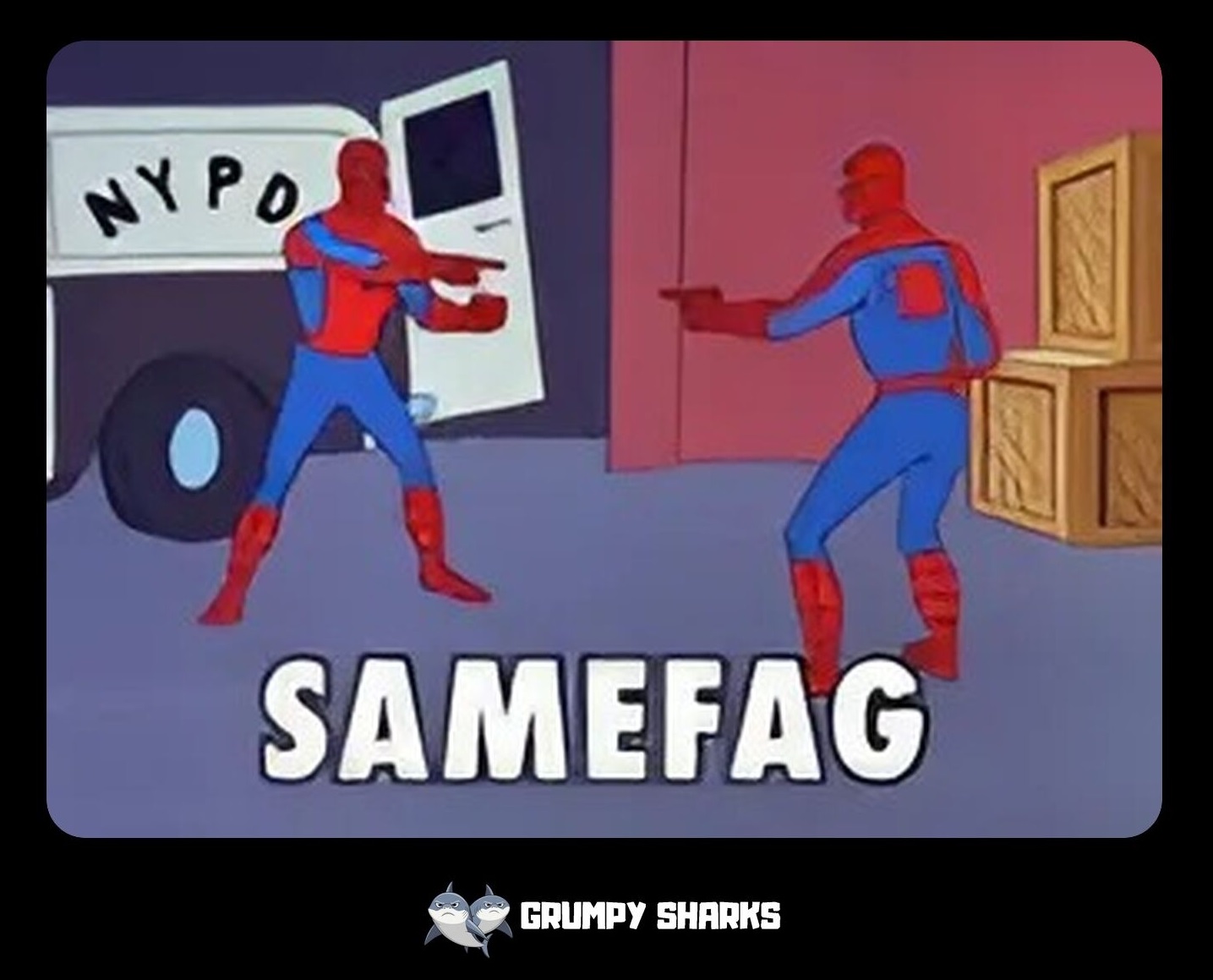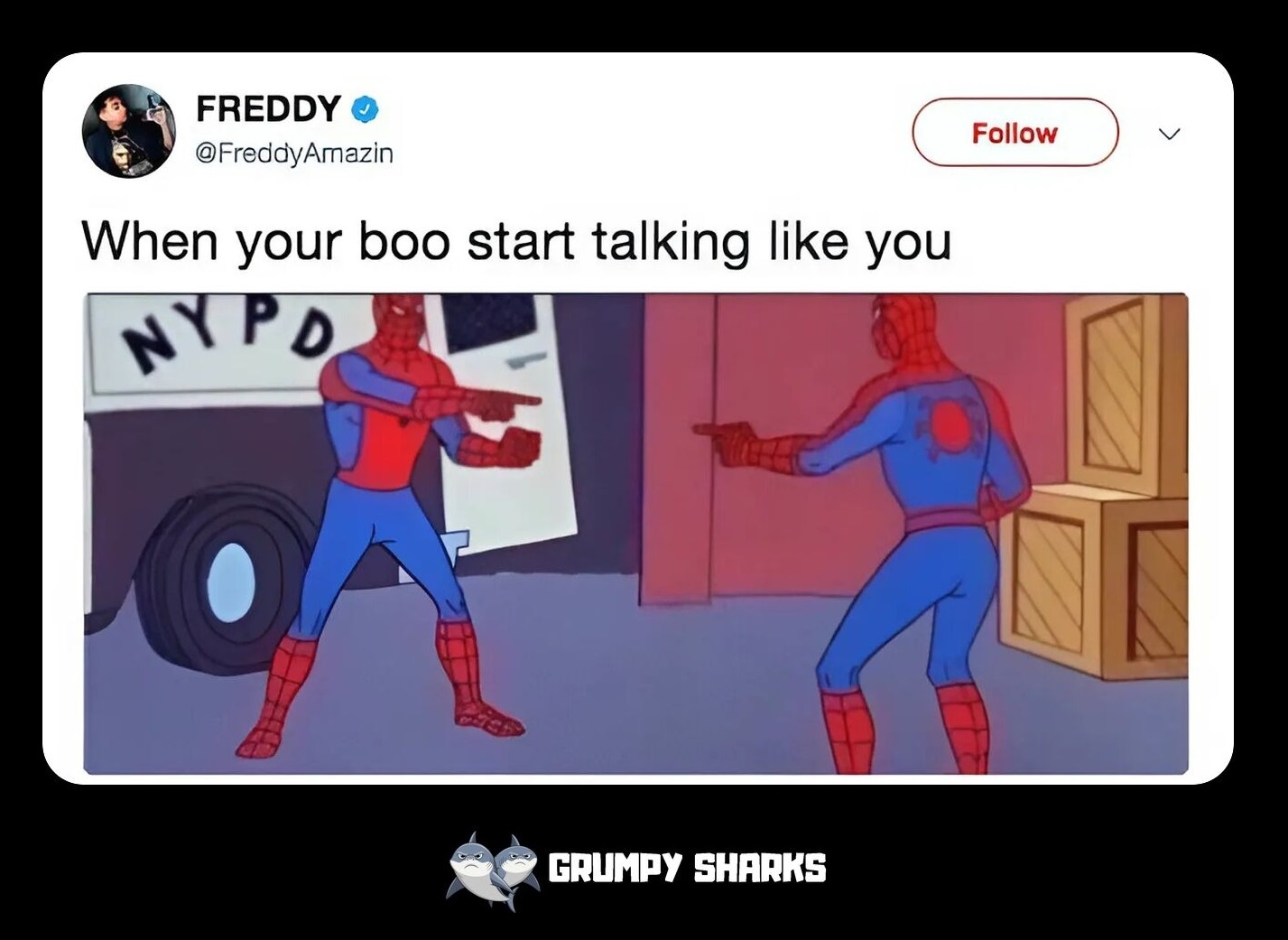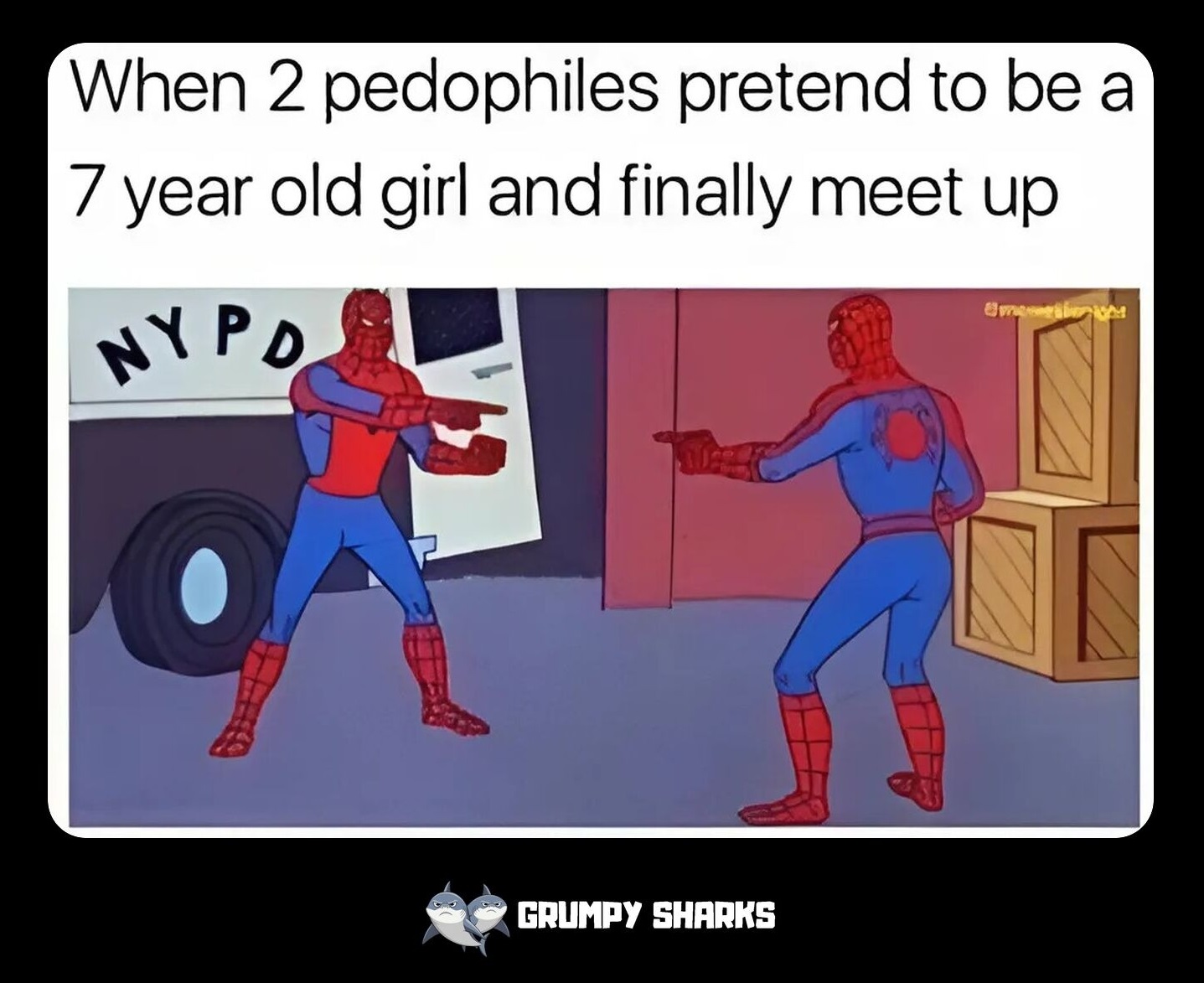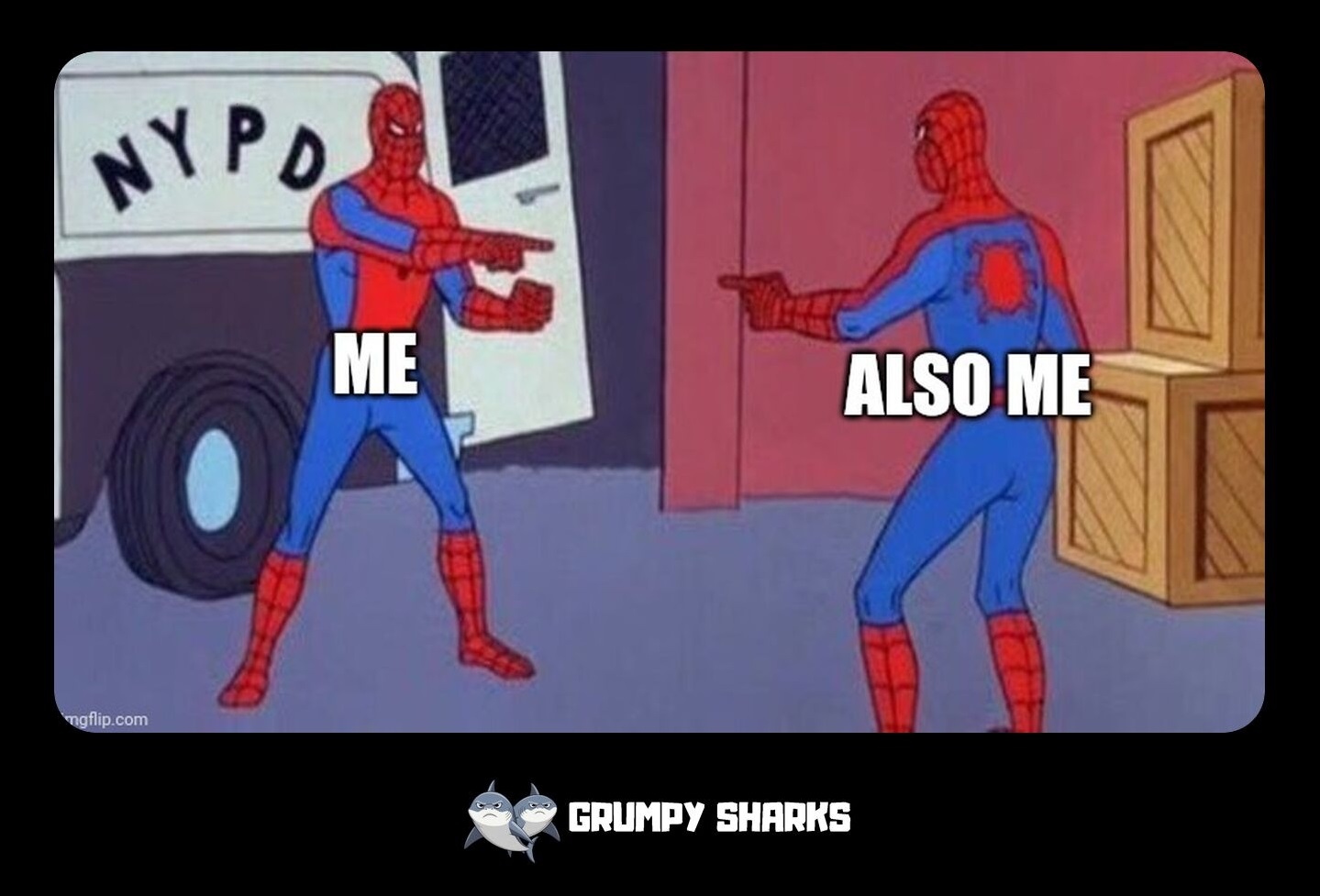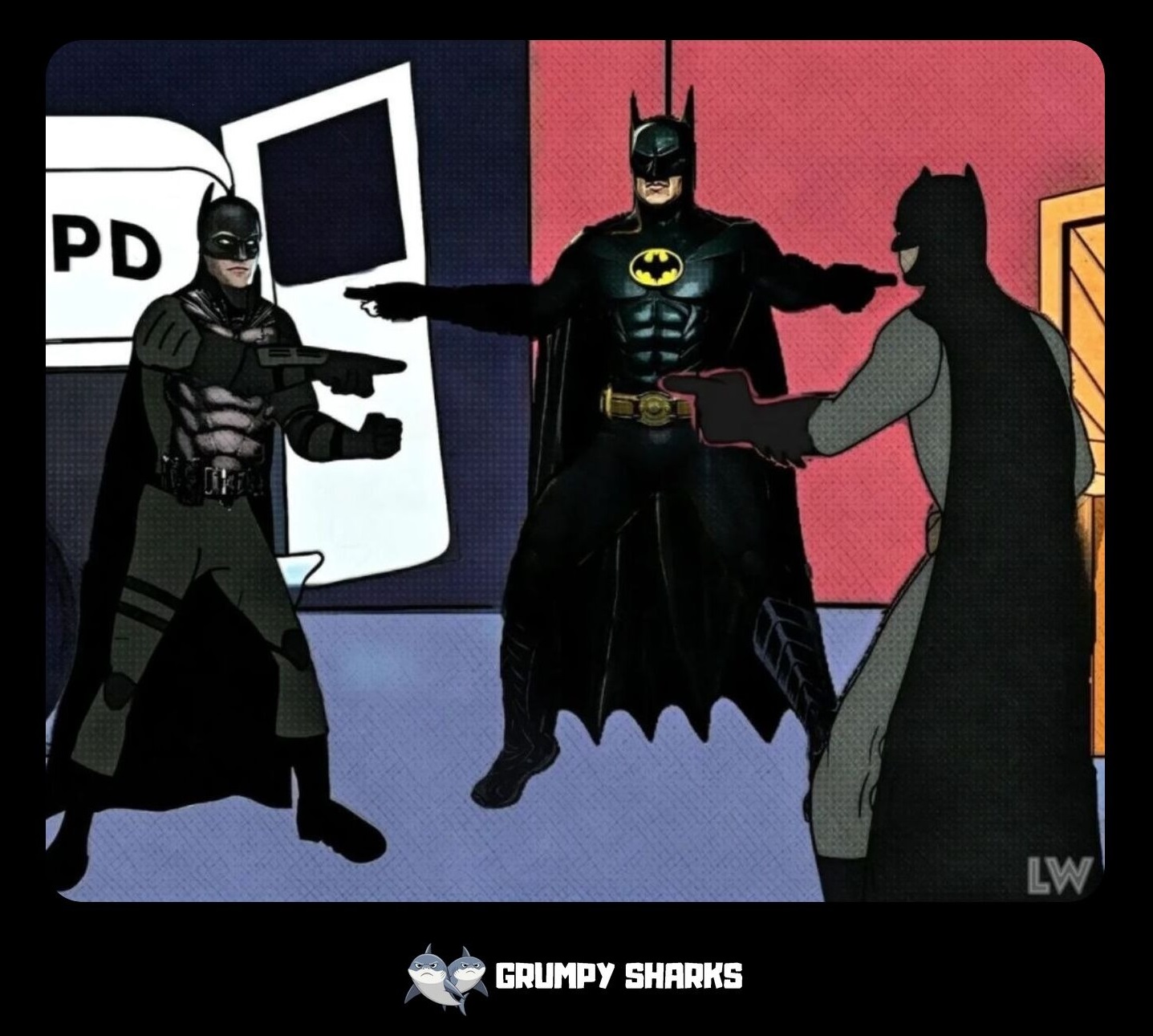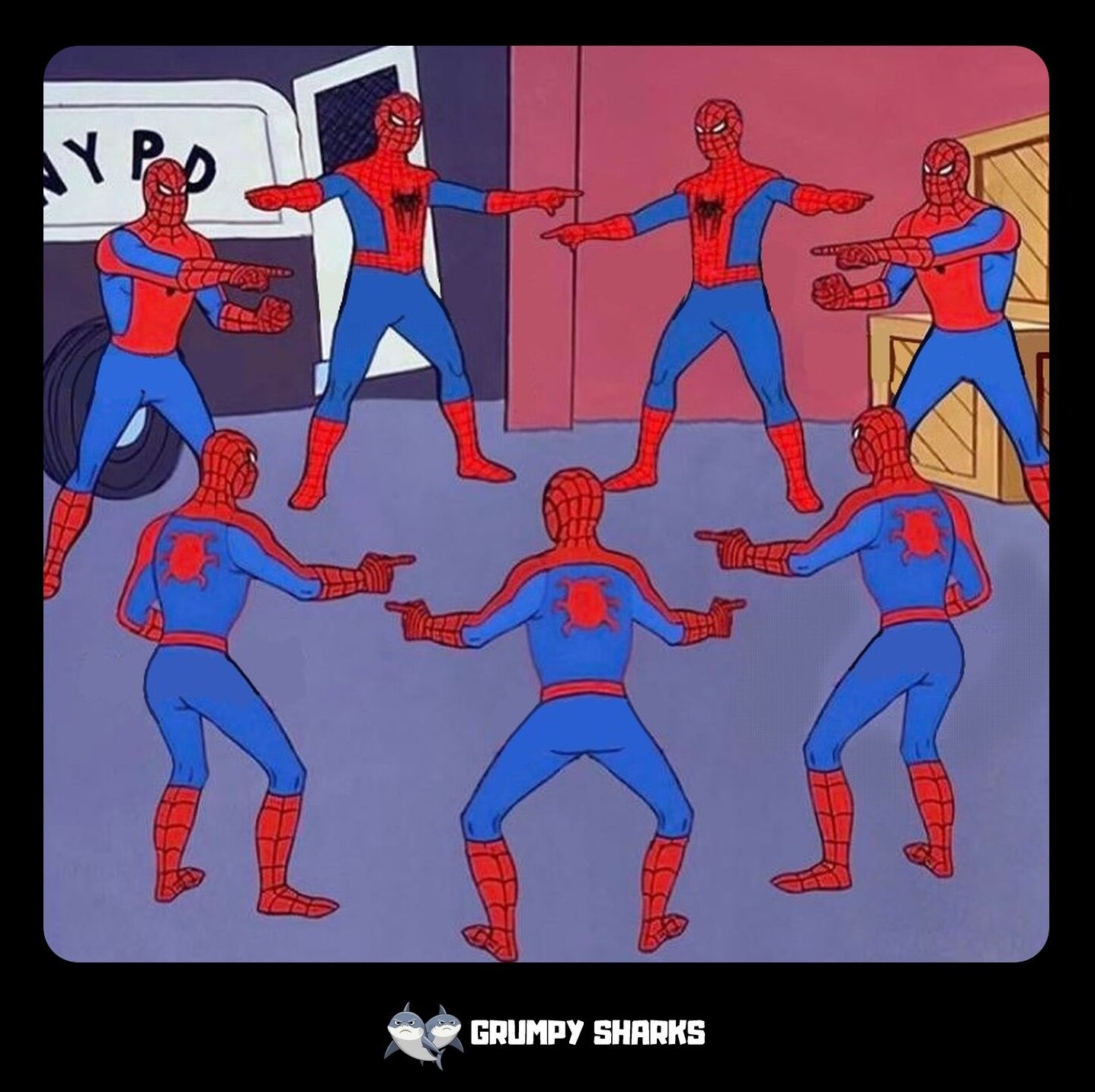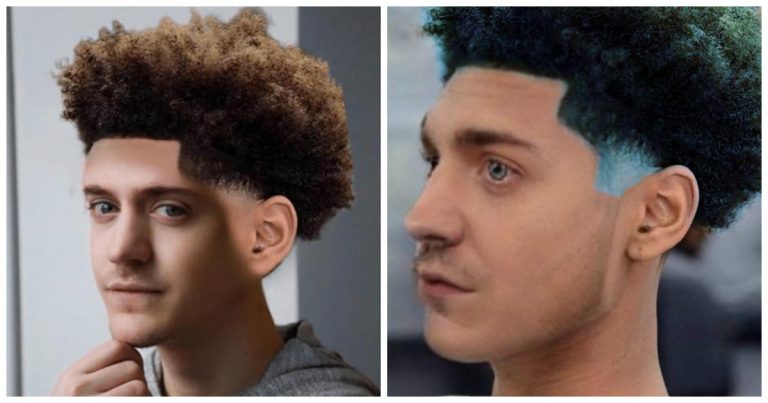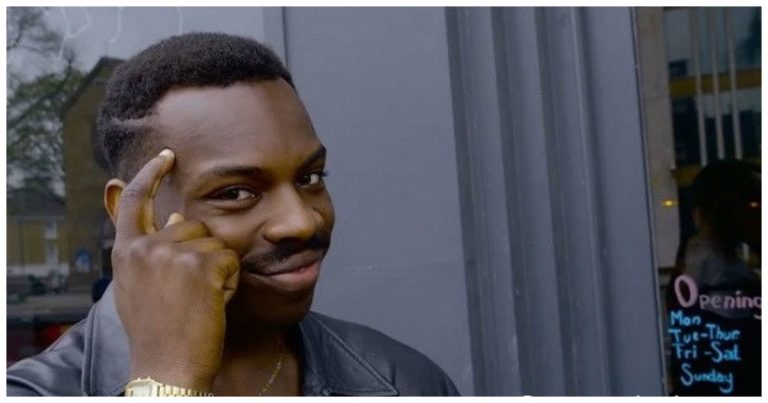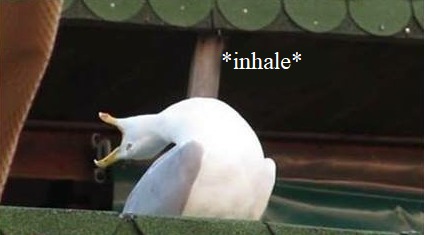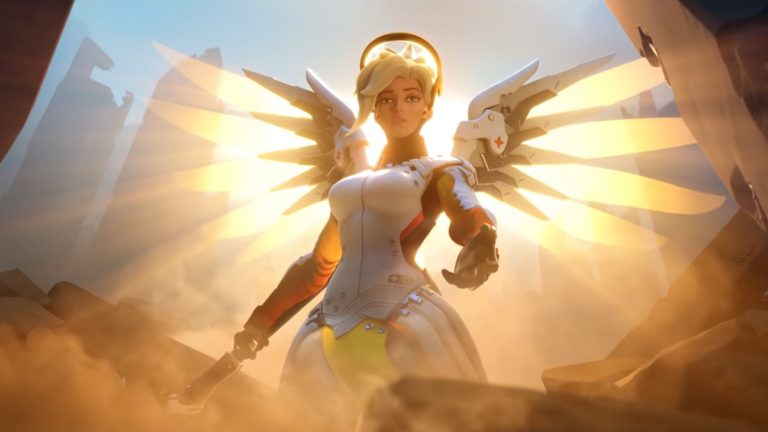Spider-Man Pointing Meme: Meaning, Origin, Variations And How It Went Viral
The Spider-Man Pointing Meme has become internet shorthand for calling out hypocrisy, confusion, or the hilarious realization that you and your “opponent” are exactly the same.
Pulled from a single frame of the 1967 animated Spider-Man series, the meme shows two identical Spider-Men accusing each other of being impostors—and somehow, it perfectly captures everything from workplace drama to pop culture déjà vu.
Originally a throwaway scene in a goofy Saturday morning cartoon, this image exploded online in the 2010s and now appears everywhere: labeled image macros, multi-character redraws, real-life recreations, even Marvel’s own promotional material.
Keep reading to find out how this simple pointing pose became one of the most beloved and endlessly remixable formats in meme history.
What Is the Spider-Man Pointing Meme?
The Spider-Man Pointing Meme refers to a widely circulated image from the 1967 Spider-Man animated series, showing two Spider-Men pointing at each other in confusion. The image is used online to humorously depict situations involving hypocrisy, mistaken identity, self-ownage, or ironic similarity between two subjects.
It’s often captioned or repurposed with new characters, labels, or pop culture references to fit various contexts—anything from political commentary to sports rivalries or family drama.
The Origin of the Spider-Man Pointing Meme
It Started with the 1967 Animated Spider-Man Series
The Spider-Man Pointing meme originates from Spider-Man Season 1, Episode 19b, titled “Double Identity.”
The plot revolves around a classic setup: J. Jonah Jameson, editor of the Daily Bugle, arranges a high-profile art exchange hoping to draw out Spider-Man—who he still believes is a menace. But things take a strange turn when not one, but two Spider-Men arrive on the scene.
In the episode, one “Spider-Man” appears and begins stealing the artwork. Moments later, another Spider-Man shows up and confronts the thief. The two masked figures point at each other in confusion and accusation, sparking a comedic standoff as they each claim to be the real one. This is the moment that would, decades later, become the viral image we know today.
The Scene Behind the Screenshot
As the two Spider-Men accuse each other of being an impostor, Jameson—equally confused and annoyed—demands the arrest of both. The real Spider-Man proposes a duel: whoever loses gets unmasked and handed over to the authorities. The fight begins, with both characters slinging webs and mirroring each other’s moves. Spider-Man remarks that the impostor has somehow mimicked his powers—an unexplained twist given that the villain, Charles Cameo, is later revealed to be just a criminal actor with no superhuman abilities.
Eventually, the real Spider-Man gains the upper hand, defeats the impostor, and hands him over to the police. Upon removing the mask, officers recognize Cameo as a con artist skilled in mimicry and disguise. The scene ends with Jameson grumbling as Spider-Man makes a clean getaway.
How Did the Spider-Man Pointing Meme go viral?
The Spider-Man Pointing Meme didn’t go viral right away—it took decades for the internet to find it and make it iconic. The original scene aired in 1967, but the meme only started gaining traction in the early 2010s when a still image of the two Spider-Men pointing at each other began appearing on meme forums like Sharenator, FunnyJunk, and Reddit.
Its first known appearance dates back to February 2011, when it was used in a meme titled “You, You, and Me” by a user on Sharenator to mock hypocrisy and confused identity .
From there, the image was picked up and recirculated across 4chan, Tumblr, and Twitter, often with ironic labels photoshopped onto each Spider-Man (like “my boss” and “me pretending to work”).
For example, on June 26, 2012, FunnyJunk user generalshawn posted a version of the meme with the caption “SAMEFAG”, referencing users pretending to be different people on the same forum thread—one of the earliest uses of the pointing format to indicate identity confusion or hypocrisy.
In early 2013, 9GAG user stormrdr uploaded another variation, this time labeled: “HA! Look at that a**hole!”, showcasing the meme’s evolution into a generic internet callout image.
The meme started spreading rapidly through Black Twitter, especially among users referencing hip-hop culture. On May 6, 2016, Reddit user Dualestl posted the meme to r/BlackPeopleTwitter to compare rappers Future and Desiigner, who shared notably similar styles. The post gained over 1,300 points, marking one of the first mainstream meme applications of the image.
Then in early 2017, it exploded on Twitter. On March 10, 2017, user @FreddyAmazin tweeted the image with the caption: “When your boo start talking like you”.
The post gained over 3,400 retweets and 8,900 likes, further popularizing the meme format.
Reddit helped fuel the meme’s reach too. A post on May 17, 2017 to r/funny received over 440 points, and another post to r/MemeEconomy on July 9, 2017 earned 4,900+ upvotes, reinforcing its value as a “high-performing meme stock.”
The meme was cemented into pop culture canon thanks to Sony’s Spider-Man: Into the Spider-Verse (2018). In its post-credit scene, Spider-Man 2099 time-travels to the 1967 universe and points at the original cartoon Spider-Man, humorously reenacting the meme—breaking the fourth wall and acknowledging internet culture directly.
Then, on February 23, 2022, during the media campaign for Spider-Man: No Way Home, Sony released a behind-the-scenes promotional image featuring Tobey Maguire, Andrew Garfield, and Tom Holland recreating the pointing meme in full costume. The post, shared by the official @SpiderManMovie account, quickly went viral, delighting fans and bringing the meme full circle.
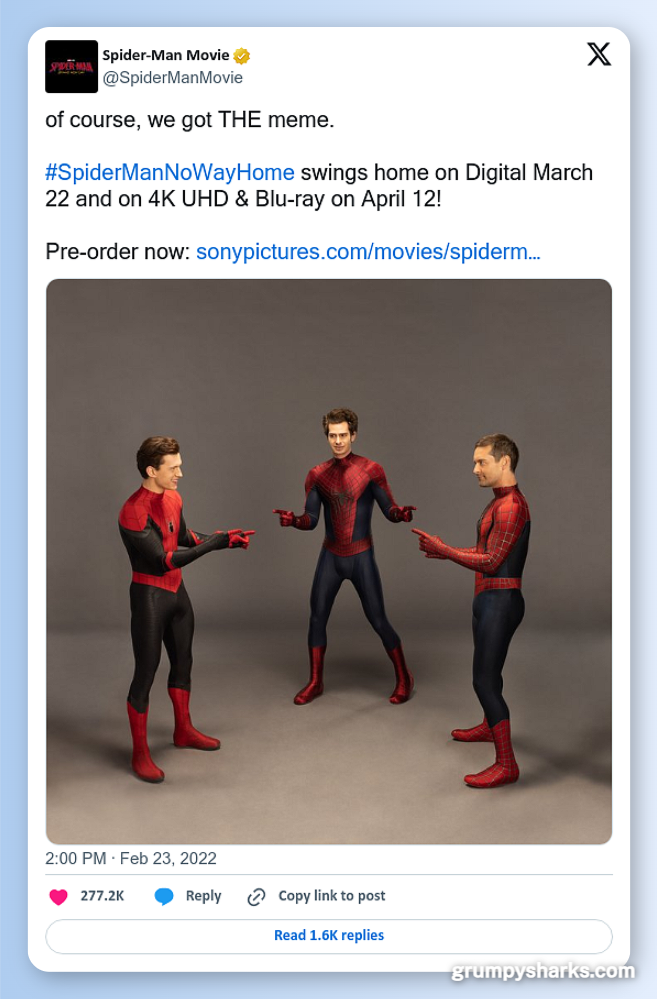
Variations of the Spider-Man Pointing Meme
The common variations of the meme are Label Swaps: “Me” vs. “Also Me”, Fandom Crossovers and Redraws and Multi-Spider-Man Memes.
-
Label Swaps: “Me” vs. “Also Me”
A common early variation is relabeling each Spider-Man with different roles or identities. These captions are usually text overlays pointing out:
- “Me” vs. “Also me” – when you’re calling yourself out
- “The boss” vs. “The intern” – when both parties are equally confused
- Two brands or influencers doing the same thing while claiming to be original
It’s often used to call out hypocrisy, redundancy, or unintentional mimicry.
-
Fandom Crossovers and Redraws
Artists and meme creators have redrawn the scene using characters from other franchises. Some popular examples include:
- Batman pointing at another Batman – often used when two dark, brooding characters have the same arc
- Among Us crewmates pointing at each other – parodying the “sus” culture
- Anime redraws featuring Naruto, Goku, or Luffy in the same pose
The meme’s format is so recognizable that you don’t even need Spider-Man anymore—just two figures, arms outstretched, and the joke lands.
-
Multi-Spider-Man Memes
After the release of No Way Home, the meme was frequently expanded to include three Spider-Men, referencing Tobey Maguire, Andrew Garfield, and Tom Holland. In these versions, each Spider-Man is labeled with different identities or roles that overlap (e.g., “My anxiety,” “My overthinking,” “My trauma”), all pointing fingers in a perfect chaos spiral.
Real-life version: Sony’s tweet with the cast
Conclusion
From retro cartoon obscurity to mainstream meme royalty, the Spider-Man Pointing Meme has solidified its place in the digital hall of fame. What started as a silly animation frame in 1967 evolved into a viral expression of irony, identity, and imitation—refreshed by every new version, label swap, or Spider-Verse update.
Its staying power lies in its pure visual clarity and universal vibe: we’ve all had a moment of Spider-Man-style mutual confusion. Whether you see it on Twitter calling out copycat celebrities, in a three-way No Way Home tribute, or mashed up with anime and Among Us redraws, this meme proves that a well-timed gesture can outlive even the wildest origin stories. It’s not just a meme—it’s a multiversal mood.

